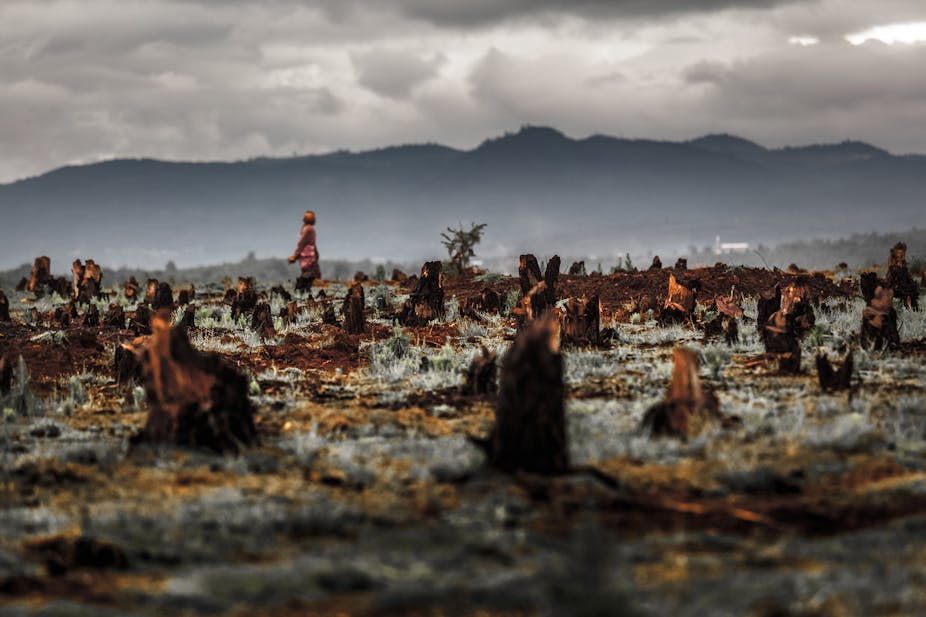Despite being a preventable and curable disease, malaria continues to affect people in 91 countries. In 2015 alone there were 212 million cases and about 430,000 deaths. Sub-Saharan Africa carries a disproportionately large burden with 90% of malaria cases and 92% of deaths from the disease.
Malaria is a very old parasitic disease. It is transmitted to humans through the bite of the female Anopheles mosquitoes. Not all types of Anopheles mosquitoes like the same conditions but, in general, standing water, increasing temperatures and sunlight are favourable to most malaria-carrying species. This explains why, for a long time, infection has been linked to environmental conditions.
Despite this link, little research has been done on what makes certain areas more conducive to malaria-carrying mosquitoes. My new study of 67 less-developed, malaria-endemic nations is an attempt to fill this gap. It shows a link between deforestation and increasing malaria rates across developing nations.
Linking forest loss to malaria
The goal was to establish whether there was an identifiable link between forest loss and malaria prevalence rates across countries. Previous studies show evidence of a link between forest loss and mosquito populations or malaria parasite levels. In Kenya, for example, one study in the highlands found that living on land without trees led to increased risk of contracting malaria. But there was a lack of research on whether this was a general trend or whether these findings were isolated to certain settings, influenced by nuances of the local ecology.
I used data on forest cover from the Food and Agriculture Organisation, and malaria prevalence rates from the World Health Organisation at the national level. My research found that even when controlling for other known factors, like health care provision and latitude, nations that experience more forest loss tend to have higher rates of malaria.
In addition to making this broad link, the findings confirms research that shows deforestation isn’t a natural phenomenon, but is caused by human activities. The study found that rural population pressures, such as firewood collection for fuel, and specialisation in agriculture, are key to rural forest loss in malaria-endemic nations.
Deforestation increases the incidents of malaria because it creates several favourable conditions for the Anopheles mosquito. These include:
Pools of water being exposed to sunlight. This increases temperatures, promoting more ideal breeding grounds
Creating ditches and puddles which are more likely to pool less acidic water. This is more conducive to Anopheles larvae development
Reducing the absorption of water – primary growth forests tend to be heavily shaded with thick debris on the ground. This absorbs water and often leaves any standing water acidic, and
Creating “tree bowls” where stumps are left behind and gather pool water.
Solutions lie with people
Since people cause the loss of trees, it’s crucial to emphasise the human drivers when looking for solutions. For example, changes in agricultural practices should be pursued, such as leaving some trees and practicing more shade or mixed cultivation. This could replace plantation agriculture which involves clear-cutting forests and could help mitigate some of the harmful effects.
Malaria remains a leading cause of death and a threat to health in many countries across the Global South. There have been major improvements in malaria prevention, diagnosis, and treatment over the last several decades. But changes to the natural environment increase the scope and severity of the risk. It’s within the power of governments – and people – to ensure that this doesn’t happen by implementing or mandating more sustainable forest management.

